By Cindra Kerscher, The Livestock Conservancy (All photos by Deb Robson)
Do you want to knit some hard-wearing socks or crochet a super soft baby blanket? Perhaps you are planning to weave a shawl or table runner? Maybe you’re inclined to felt a vessel, vest or rug. How do you choose the best wool for the job?
Wools are designated as fine, medium or coarse based on fiber diameter; often this designation is noted as Bradford or micron count. These terms refer to the average thickness of the wool fibers and determine softness or strength. You’ll generally use fine to medium wools for softness. Longwools are used for luster and strength. Down-type wools provide loft and elasticity. Dual-coated wools supply versatility and durability.
Sheep breeds on the Conservation Priority List (CPL) can be grouped into the following wool categories based on similar characteristics:
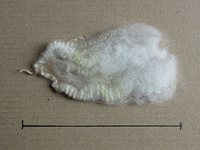
Romeldale/CVM Fiber
Fine wools include Romeldale/CVM and some Shetland. With a 17 to 22-micron count, these are the softest wools on the CPL. Select these for next-to-skin softness when itchiness is a concern, as well as for delicate items such as lacy shawls, scarves and baby garments. They have excellent felting ability and produce a woven fabric with excellent drape. However, these wools are not considered durable and are not reliably machine-washable/dryable. Handle with care!
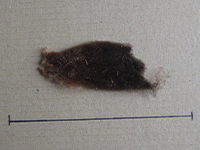
Santa Cruz Fiber
Medium Wools include Florida Cracker, Gulf Coast Native, Jacob, Santa Cruz and Tunis. These wools can be surprisingly soft with added flexibility and usefulness not found in very fine and coarse wools. These wools make excellent garments, blankets and woven textiles. Some fleeces are even soft enough for babies and sensitive skin.
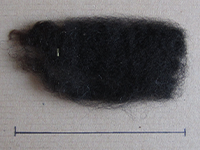
Black Welsh Mountain Fiber
Down-type wools include Black Welsh Mountain, Clun Forest, Dorset Horn, Hog Island, Oxford, Shropshire and Southdown. These breeds offer all the qualities of medium-grade wool with added insulation, elasticity and washability. Highly resistant to felting, use these wools when making items that must go in the washer and dryer (on low). They make excellent garments, blankets, mattress pads, comforters and quilt batting, as well as toy stuffing.
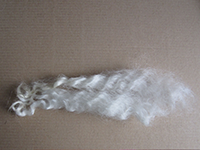
Leicester Longwool Fiber
Longwools include Cotswold, Leicester Longwool, Lincoln and Teeswater. The strongest wools on the CPL have an average micron count over 30. These are ideal for hardwearing items such as boot socks, outerwear, sturdy knits or woven garments and textiles for the home. Longwools can also be moderately soft to the touch. Lustrous locks take and reflect vibrant dyes very well. When left undyed, they maintain a sheen similar to human hair leading to their popularity in doll-making.
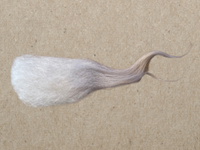
Navajo-Churro Fiber
Double-coated fleeces include Karakul, Navajo-Churro, Shetland, Soay (British) and Wiltshire Horn. Both a soft, medium undercoat and a strong outer coat can be found in one fleece. Some artists separate these fibers for use in different projects; other artists choose to spin them together. When purchasing yarn from a dual-coated breed, ask how it was processed. These wools are often used in tapestry and rug making, as well as garments and home goods. Wiltshire Horn is a roughly 50/50 wool/hair breed with the wool falling in the medium category above.
Hair Breeds include Barbados Blackbelly and Saint Croix. These endangered breeds are primarily self-shedding, double-coated hair sheep that produce a very small percentage of wool. The hair is short, coarse and slick making it a challenge to spin. However, some fiber artists have successfully spun the hair and wool together or needle felted the wool after separating the coats.
Remember, fleece quality varies between breeds and within individual flocks. Ask the fiber provider questions based on your production goals. The Livestock Conservancy’s Fleece and Fiber Buying Guide provides additional details. To learn more about a breed’s history, wool characteristics, recommended uses and preparation, check out the Heritage Sheep Breed Fiber Profiles.
Each of the sheep breeds on the CPL has an interesting history, as well as unique and valuable fiber. Whether you are looking for natural color, luster, softness, drape, bounce, durability or washability, there is an endangered breed wool to meet your needs.
Using wool from these heritage breeds puts these beautiful animals to work doing what they do best – producing a sustainable natural product. Thanks to hundreds of years of genetic selection and protection by thousands of shepherds throughout history, you can be part of today’s conservation solution when you select heritage breed wool for your fiber projects.



